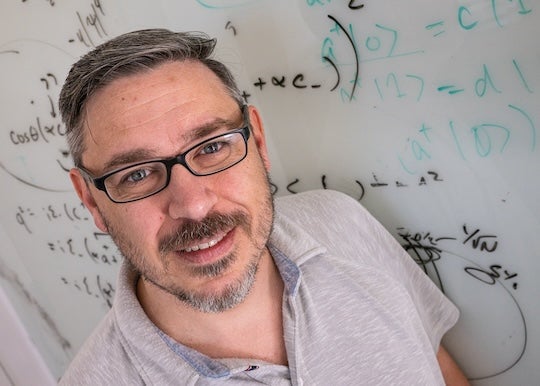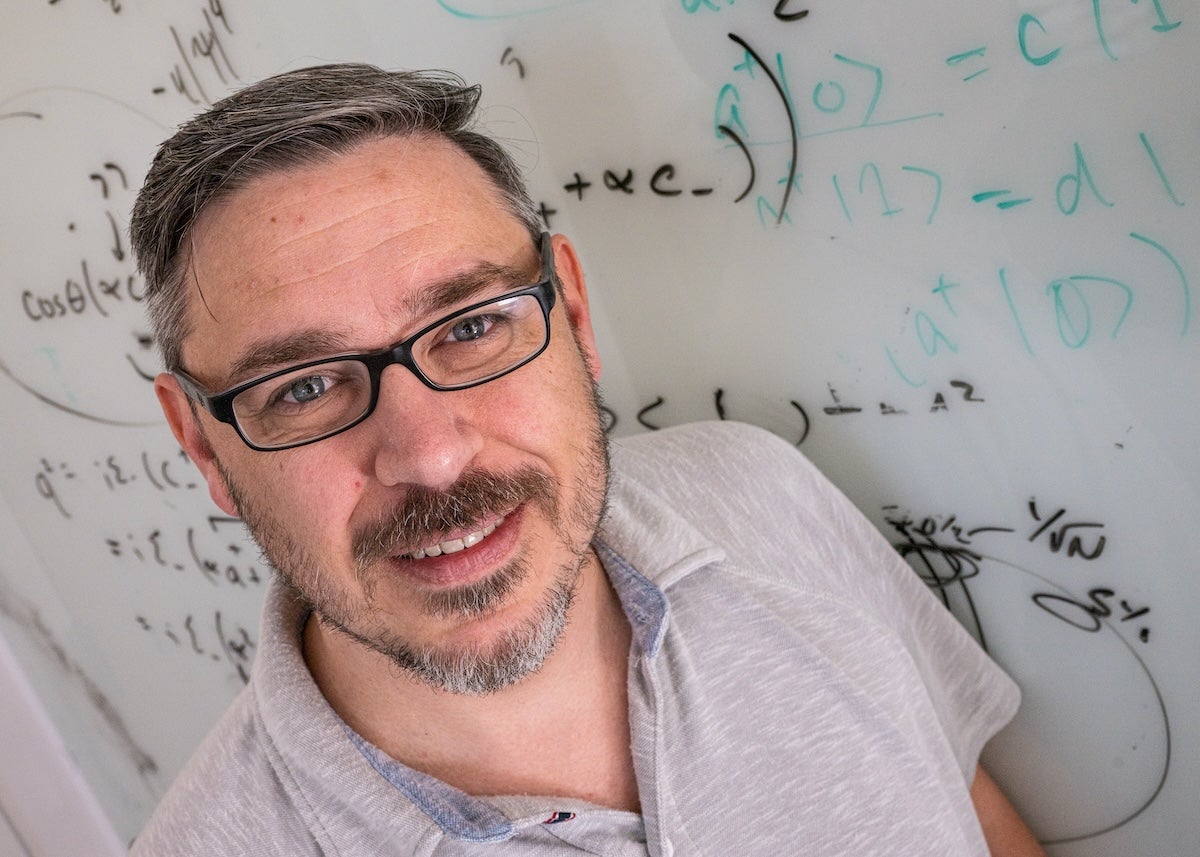by George Hale
Special to Rice News

From the early days of quantum mechanics, scientists have thought that all particles can be categorized into one of two groups — bosons or fermions — based on their behavior.
However, new research by Rice University physicist Kaden Hazzard and former Rice graduate student Zhiyuan Wang shows the possibility for particles that are neither bosons nor fermions. Their study, published in Nature Jan. 8, mathematically demonstrates the potential existence of paraparticles that have long been thought impossible.
“We determined that new types of particles we never knew of before are possible,” said Hazzard, associate professor of physics and astronomy.
Quantum mechanics has long held that all observable particles are either fermions or bosons. These two types of particles are distinguished by how they behave when near other particles in a given quantum state. Bosons are able to congregate in unlimited numbers, whereas only one fermion can exist in a given state. This behavior of fermions is referred to as the Pauli exclusion principle, which states that no more than two electrons, each with opposite spins, can occupy the same orbital in an atom.
“This behavior is responsible for the whole structure of the periodic table,” said Hazzard. “It’s also why you don’t just go through your chair when you sit down.”

In the 1930s and 1940s, researchers began trying to understand whether other types of particles could exist. A concrete quantum theory of such particles, known as paraparticles, was formulated in 1953 and extensively studied by the high energy physics community. However, by the 1970s, mathematical studies seemed to show that so-called paraparticles were actually just bosons or fermions in disguise. The one exception was the existence of anyons, an exotic type of particle that exists only in two dimensions.
However, the mathematical theories of the 1970s and beyond were based on assumptions that are not always true in physical systems. Using a solution to the Yang-Baxter equation, an equation useful for describing the interchange of particles, along with group theory and other mathematical tools, Hazzard and Wang set to work to show that paraparticles could theoretically exist and be fully compatible with the known constraints of physics.
The researchers focused on excitations, which can be thought of as particles, in condensed matter systems such as magnets to provide a concrete example for how paraparticles can emerge in nature. “Particles aren’t just these fundamental things,” said Hazzard. “They’re also important in describing materials.”

“This is cross-disciplinary research that involves several areas of theoretical physics and mathematics,” said Wang, now a postdoctoral researcher at the Max Planck Institute of Quantum Optics in Germany.
Using advanced mathematics, such as Lie algebra, Hopf algebra and representation theory, as well as a pictorial method based on something known as tensor network diagrams to better handle equations, Hazzard and Wang were able to perform abstract algebraic calculations to develop models of condensed matter systems where paraparticles emerge. They showed that, unlike fermions or bosons, paraparticles behave in strange ways when they exchange their positions with the internal states of the particles transmuting during the process.
While they are groundbreaking on their own, these models are the first step toward a better understanding of many new physical phenomena that could occur in paraparticle systems. Further development of this theory could guide experiments that could detect paraparticles in the excitations of condensed matter systems. “To realize paraparticles in experiments, we need more realistic theoretical proposals,” said Wang.
The discovery of new elementary particles and properties in materials could be used in quantum information and computation such as secretly communicating information by manipulating the internal states of particles.
Contemplating possible applications is in its infancy and still mostly speculation. This study is an early step in the study of parastatistics in condensed matter systems, but where these findings could lead is uncertain. Further exploration of the new types of theories discovered and observation of paraparticles in condensed matter systems and other materials will be subjects for research in the future.
“I don’t know where it will go, but I know it will be exciting to find out,” said Hazzard.

